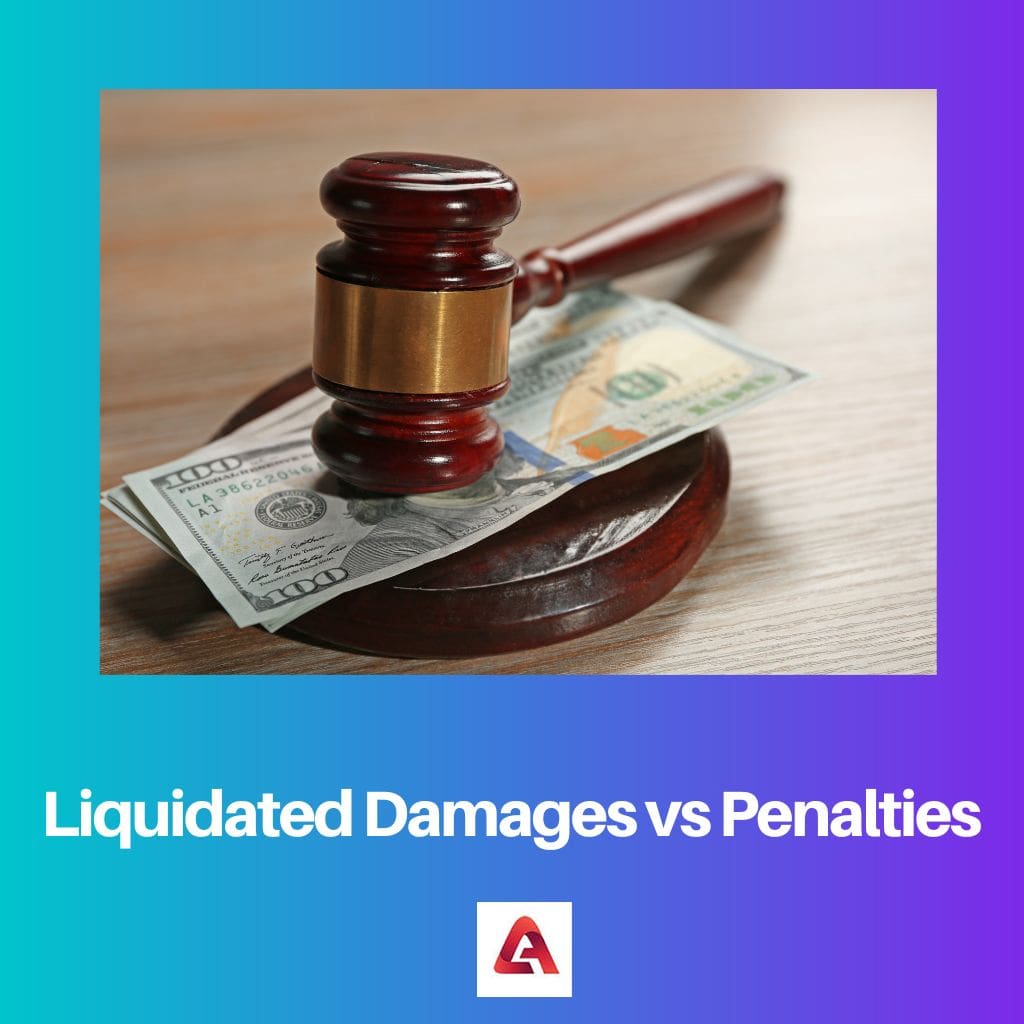The difference between liquidated damages and penalties is that liquidated damages are the approximated amounts that parties designate during the implementation of a contract to act as security for the affected party to collect as compensation upon a specific breach, while on the other hand, penalties are the sum determined by parties in a contract to be paid in case there is a breach, and it is higher than the damage likely to occur.
Liquidated damages are applied in instances where the damages are not tangible. It’s the average cost of the damage likely to occur since it is proportionate to the damage that occurs.
Its purpose is to increase security and avoid legitimate costs of determining damages later on in case the contract is breached. They are fair compensations.
Penalties are the hefty amount put aside to prohibit any form of contract breach. They are larger than the damages likely to occur. Therefore, it is a punishment for a breach of contract.
It compels the parties involved to perform the contract. If not, they will be liable for the amount put aside as a penalty.
Key Takeaways
- Liquidated damages are a predetermined amount agreed upon by parties in a contract, while penalties are additional charges imposed for non-performance or breach of contract.
- Liquidated damages aim to compensate the injured party for losses, whereas penalties deter contract breaches.
- Courts enforce liquidated damages if they are reasonable but may not enforce penalties if they are considered excessive or punitive.

Liquidated Damages vs Penalties
In case of a breach of contract, there are two possibilities, in the first case, the amount of the damage is approximated as the damage is not tangible, mostly it is to compensate for the damage, which refers to liquidated damage. In the second case, the party that breaches the contract will pay a hefty amount, as discussed earlier in the contract, as a punishment for the act.
Comparison Table
| Parameter of Comparison | Liquidated Damages | Penalties |
|---|---|---|
| Meaning | Approximate amount put aside to be paid in case there is a contract breach | Hefty amount to be paid in case of a breach of contract |
| Loss estimation | Proportionate to the damage likely to occur | No approximation |
| Objective | Determine the maximum amount of compensation | Compel parties to perform the contract |
| Imposition | Compensation | Punishment |
| Order | Pays actual damage amount as per specified | Pays larger amounts than the actual damage that has occurred |
What are Liquidated Damages?
These are the approximated fixed amounts that parties designate to act as a security and be paid as compensation in case there is a breach amongst the parties involved.
Its main objective is to determine the maximum amount of compensation if there is a breach. It is fair and proportionate to the damage likely to occur. Its purpose is to increase certainty and avoid legit costs of specifying damages later on in case of a breach.
It is a form of fair compensation-not too high or too low. It’s applied where damages are not tangible. When the damages are not pre-determined in case of a breach, they’re termed “at large” and determined by a tribunal.
The authority for the proposition that averaging is the appropriate approach in case of a breach may be taken from the Case of English Hop Growers V Dering 2KB 174 (A1928). This supports the liquidated damages clause.
It is an estimation of the loss likely to occur in case there is a breach, and it determines the maximum compensation for the damage. It’s paid in the actual amount as per specified.
What is a Penalty?
It is the large sum determined by parties in a contract to be paid if there is a breach. It’s larger than the damage likely to occur. Its main objective is to compel the parties involved to perform the contract without fail, for one not to pay the penalty as a punishment.
It is a form of contract security that prohibits the parties from absconding. Therefore, it does not put into consideration the estimation of the loss likely to occur.
It is large and unreasonable compared to the maximum loss. The amount is more than the one to be paid. By this, the parties will have no choice but to undertake the contract. It’s a punishment for a breach.
When penalties have been imposed on contracts, there are minimal or no breaches of contracts because the amount is too high. Therefore, it will compel the parties to perform the contract without fail.
When there is a contract breach, the parties pay the amount without putting into consideration the specified area where the contract has been breached. This means the amount payable is equal whether part of the contract or the whole contract has been breached.

Main Differences Between Liquidated Damages and Penalties
- Liquidated damages are the approximated amounts to be laid to an injured party in case there is a contract breach while a penalty is a hefty amount to be paid in case there is a breach, and it is larger than the damage likely to occur.
- Liquidated damages are in actual amount as specified by the contract, while penalties are paid irrespective of whether part of the contract or the whole contract has been breached.
- Liquidated damages are used to determine the maximum amount of compensation in case there is a contract breach while penalties are imposed to compel the parties to perform the contract without fail.
- Liquidated damages are forms of compensation, while penalties are punishments.
- Liquidated damages are proportionate to the damage likely to occur, while penalties have no approximation.
